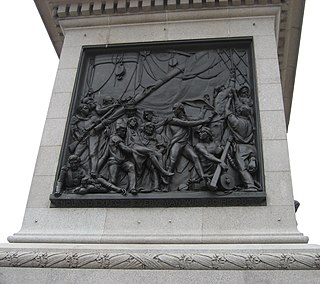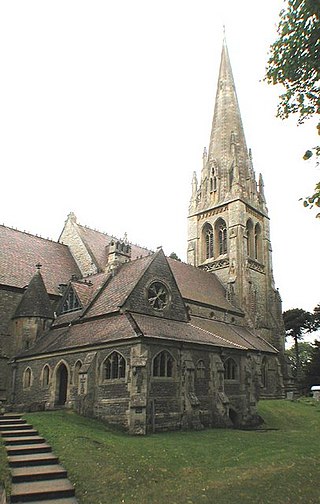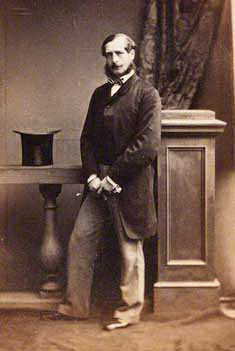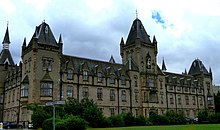
William Butterfield was a British Gothic Revival architect and associated with the Oxford Movement. He is noted for his use of polychromy.

Sir George Gilbert Scott, largely known as Sir Gilbert Scott, was a prolific English Gothic Revival architect, chiefly associated with the design, building and renovation of churches and cathedrals, although he started his career as a leading designer of workhouses. Over 800 buildings were designed or altered by him.

Sir Arthur William Blomfield was an English architect. He became president of the Architectural Association in 1861; a Fellow of the Royal Institute of British Architects in 1867 and vice-president of the RIBA in 1886. He was educated at Trinity College, Cambridge, where he studied Architecture.

Sir Reginald Theodore Blomfield was a prolific British architect, garden designer and author of the Victorian and Edwardian period.
Philip Charles Hardwick was an English architect.

James Piers St Aubyn, often referred to as J P St Aubyn, was an English architect of the Victorian era, known for his church architecture and confident restorations.

John Edward Carew was a notable Irish sculptor during the 19th century. His most prominent work is The Death of Nelson, one of the four bronze panels on the pedestal of Nelson's Column in Trafalgar Square.
Benjamin Ferrey FSA FRIBA was an English architect who worked mostly in the Gothic Revival.
Frederick Wheeler (1853–1931) (FRIBA) was a British architect, born in Brixton, Surrey, in October 1853. His parents were Christopher and Mary Ann Wheeler. He was articled to Charles Henry Driver (1832–1900), whose offices were at 7 Parliament Street, London SW1, and who is best known as the architect for the Victoria Embankment and Abbey Mills.

St Michael and All Angels Church, on Mount Dinham in Exeter is an Anglican church in Devon, England. It is a Grade I listed building. The church is Anglo-Catholic in tradition. The building in is the early Gothic style and was built to the designs of Major Rohde Hawkins, 1867–68. The reredos is by W. D. Caroe, 1899.

Henry Woodyer (1816–1896) was an English architect, a pupil of William Butterfield and a disciple of A. W. N. Pugin and the Ecclesiologists.

South Holmwood is a semi-rural village in Surrey, England. It can be considered cognate with its wider civil parish, which stretches to the east to embrace Holmwood Common, but does not include Mid Holmwood, or North Holmwood, the latter being contiguous with Dorking. Betchett's Brook is the southern boundary and runs through a locality known as Holmwood Corner. However, Holmwood railway station is within the parish of Capel, although connected to the South Holmwood by a curved path passing through Holmwood Corner Common. Centred 3 miles (4.8 km) south of Dorking, South Holmwood is on the A24 London to Worthing road, a dual carriageway through the village.

Henry Clutton was an English architect and designer.
Joseph Clarke (1819–1888) was a British Gothic Revival architect who practised in London, England.

John Norton was an English architect who designed country houses, churches and a number of commercial buildings.
Alexander Dick Gough was an English architect who practised in London, where much of his work may be found. He was a pupil of Benjamin Dean Wyatt, and worked in partnership with Robert Lewis Roumieu between 1837 and 1848.

The Royal Victoria Patriotic Building is a large Victorian building in a Gothic Revival style combining Scottish Baronial and French Châteauesque. It is located off Trinity Road in Wandsworth, London. It was built in 1859 as the Royal Victoria Patriotic School, by popular subscription as an asylum for girls orphaned during the Crimean War. It is a Grade II* Listed Building designed by the architect Major Rohde Hawkins.

Edward Bowring Stephens, was a British sculptor from Devon. He was honorary secretary of the Institute of Sculptors circa 1861.

Samuel Staniforth was an English slave-trader, merchant and politician originally from Liverpool.

John Greenwood was an English politician who served as Liberal M.P for Ripon, then in the West Riding of Yorkshire.

















